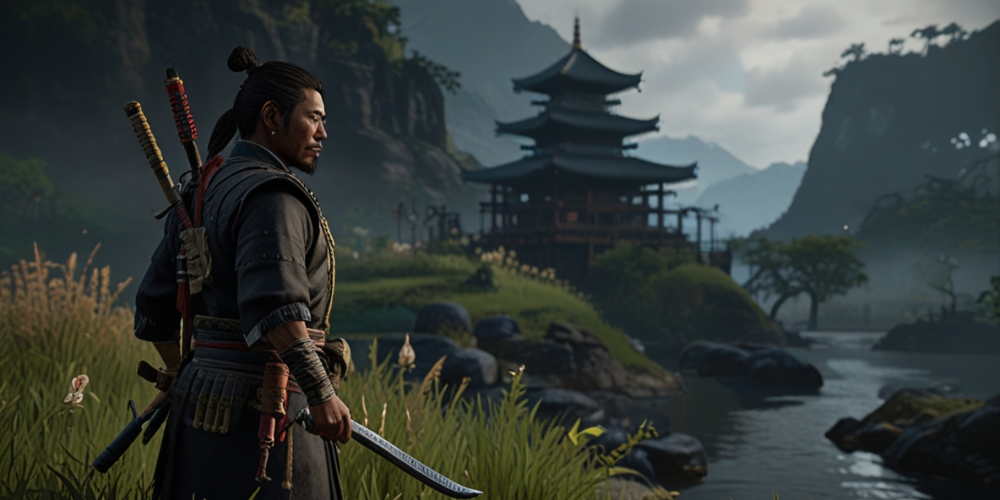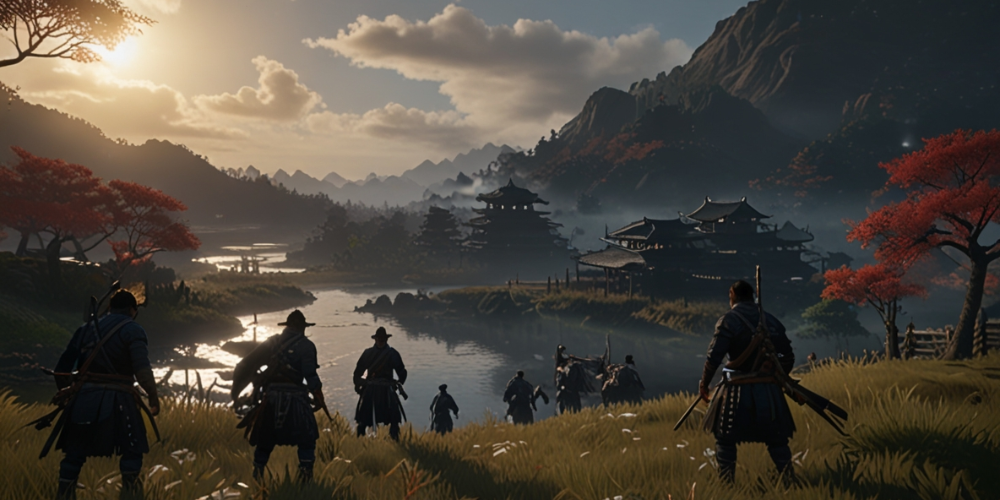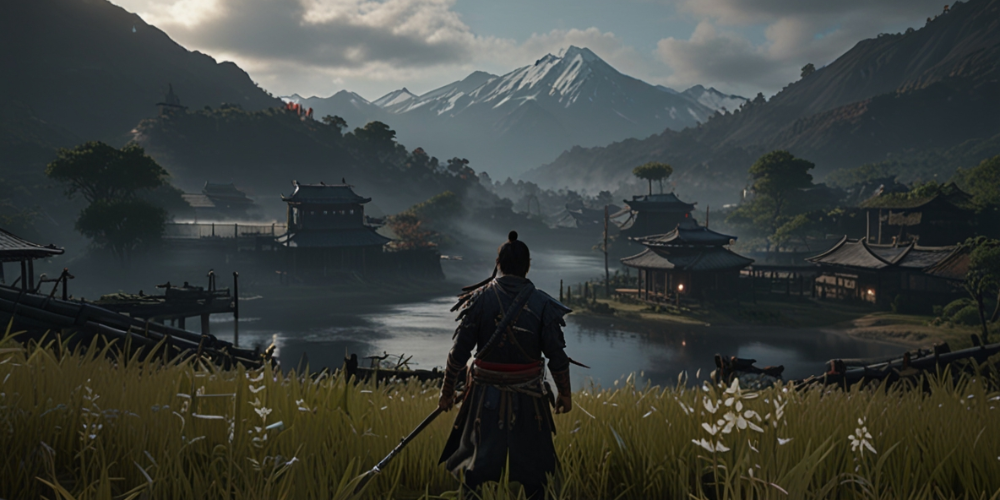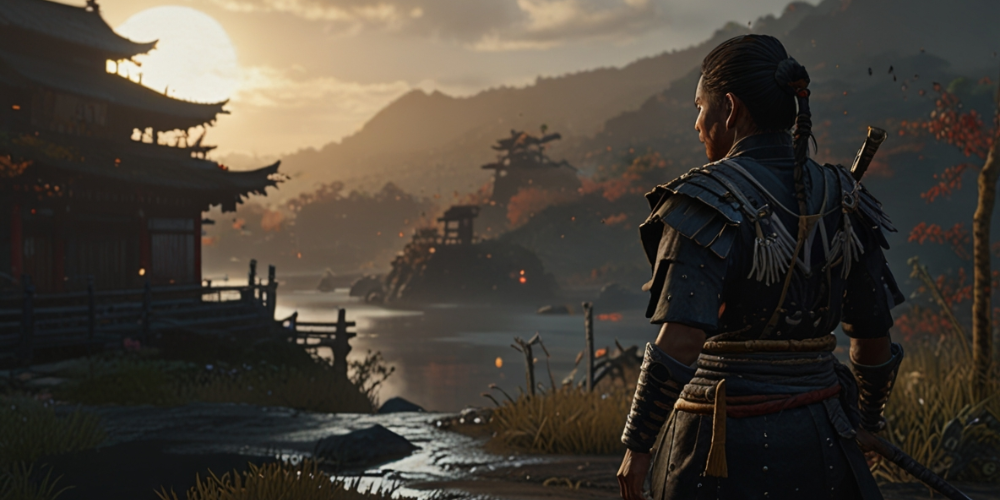Ghost of Tsushima: The Beauty of Exploration and the Importance of Stealth Mechanics
Aug-20-2024

One of the most striking elements of Ghost of Tsushima is its breathtaking visual presentation. The game captures the essence of feudal Japan with incredible detail, from the densely packed forests to the expansive plains. The vibrant colors evoke the changing seasons, from the rich reds of autumn leaves to the soft pinks of cherry blossoms in spring. This rich aesthetic creates an immersive world that feels alive.
Open World Exploration: Freedom and Adventure
The open-world design of Ghost of Tsushima encourages players to explore every corner of Tsushima Island. The vast landscapes provide a sense of freedom rarely seen in action-adventure titles. Players can traverse the environment on horseback, taking shortcuts through dense vegetation or galloping along coastal paths. The exploration often leads to hidden shrines, artifacts, or unexpected encounters that enrich the storytelling experience.
Dynamic Weather and Day-Night Cycles
One of the most impressive aspects of Ghost of Tsushima is its ever-changing weather patterns and the seamless transition between day and night. Each scenario brings a unique atmosphere that can impact gameplay. Rain can create slippery terrain, while fog enhances the stealth experience. The time of day affects both visuals and enemy behavior, requiring players to adapt their strategies based on their surroundings.
Stealth Mechanics: Strategy Over Brute Force
Ghost of Tsushima integrates stealth as a core gameplay component. Players can choose to engage enemies head-on or employ stealth tactics to achieve their objectives. The choice to stay hidden changes gameplay dynamics and enhances immersion, allowing players to approach situations methodically and strategically.
Traversal and Mobility: Fluid Movement System
The game offers a fluid movement system that complements the exploration and stealth mechanics. Players can climb cliffs, leap across rooftops, and easily navigate the terrain. This level of mobility allows for creative problem-solving and diverse approaches to combat. Players are encouraged to think outside the box and adapt to the environment during engagements.
Combat System: Engaging Yet Balanced
Combat in Ghost of Tsushima is tactile and responsive. Players are equipped with various techniques, stances, and abilities, allowing them to adapt their combat style against different enemy types. The combat mechanics reward both patience and skill, as players can seamlessly transition between offensive and defensive maneuvers. This balance draws players into the combat, with every strike feeling impactful.
Character Progression: Growth and Customization
Character progression is another vital aspect of the game. As players navigate through the world, they can improve their skills, unlock new abilities, and equip different gear. This growth system encourages players to invest time in exploration, as discovering new abilities can enhance both combat and stealth approaches, catering to individual playstyles.
Side Quests and Lore: Rich Storytelling
Additionally, the game offers a variety of side quests that expand the lore and provide depth to the narrative. These adventures frequently showcase intriguing characters who face their own challenges, adding depth to the central narrative and inviting players to deeply engage with the vibrant universe. Each side quest feels significant and adds layers to the overall narrative experience.
Environmental Storytelling: Immersion Beyond Dialogue
Environmental storytelling is pivotal in Ghost of Tsushima, where visual cues and the surroundings convey stories without the need for dialogue. Ruins of battles faded banners fluttering in the wind, and artifacts provide a glimpse into the island's tumultuous history. This focus on intricacies enhances the storyline and fosters a more profound connection between players and the environment.
Art Style: A Living Canvas
The art style merges realism with a painterly aesthetic, creating a unique visual identity that sets Ghost of Tsushima apart from other games. The lush environments feel like they are painted with brush strokes, further enhancing the immersive experience. This artistic representation is complemented by cinematic cutscenes that maintain the game's visual integrity while pushing the narrative forward.
Audio Design: A Symphony of Sound
The audio design in Ghost of Tsushima is meticulously crafted, with a soundtrack that complements the story's emotional weight. The music adapts to the gameplay, transitioning from serene to intense during combat sequences. Additionally, the ambient sounds of nature and the whispers of the wind pull players deeper into the experience, making exploration even more captivating.
Customization Options: Personal Touches
Ghost of Tsushima allows players to customize their characters and gear, offering a personal touch to the gameplay experience. Players can choose various armor sets, weapons, and horse types, which affects statistics and allows for individual expression. This customization enhances the connection between players and their characters while adding a layer of personal investment in the journey.
Community Interaction: Cultural Significance
The game celebrates Japanese culture and history, engaging players in samurai traditions while encouraging conversations around its significance. The attention to cultural details throughout the game offers an educational experience, inviting players to reflect on the historical context while enjoying gameplay. This deeper engagement enhances the overall experience, bridging entertainment with cultural appreciation.
Coach and Companionship: The Bond with Allies
The relationships with supporting characters dynamically shift the gameplay experience. Your allies are not mere bystanders; their stories and growth interact directly with the protagonist, reinforcing the emotional narrative. Engaging with these characters adds depth, creating memorable bonds that extend beyond the main quest.
Narrative Themes: Honor, Identity, and Sacrifice
Through a rich narrative intertwining themes of honor, identity, and sacrifice, Ghost of Tsushima engages players on a personal level. These themes resonate throughout the gameplay, encouraging players to reflect on their choices and actions. The story arcs challenge conventional protagonist tropes, delivering a multifaceted examination of a samurai's journey in tumultuous times.
Replayability: Endless Adventures
The combination of side quests, exploration, customizable choices, and different combat styles offers significant replayability. Players can experience the narrative multiple times, choosing various paths and strategies that highlight the game's diverse features. With each playthrough, new discoveries and experiences await, enhancing the overall value of the title.










